-
 Bitcoin
Bitcoin $116400
-0.36% -
 Ethereum
Ethereum $4033
3.40% -
 XRP
XRP $3.302
-1.26% -
 Tether USDt
Tether USDt $1.000
-0.02% -
 BNB
BNB $796.1
1.67% -
 Solana
Solana $177.8
1.89% -
 USDC
USDC $0.9999
0.00% -
 Dogecoin
Dogecoin $0.2314
4.09% -
 TRON
TRON $0.3381
0.14% -
 Cardano
Cardano $0.7989
1.22% -
 Stellar
Stellar $0.4496
-1.84% -
 Chainlink
Chainlink $20.42
9.42% -
 Hyperliquid
Hyperliquid $41.17
0.88% -
 Sui
Sui $3.914
3.77% -
 Bitcoin Cash
Bitcoin Cash $584.7
1.52% -
 Hedera
Hedera $0.2632
-0.54% -
 Avalanche
Avalanche $24.09
3.40% -
 Ethena USDe
Ethena USDe $1.001
-0.02% -
 Litecoin
Litecoin $123.2
1.33% -
 Toncoin
Toncoin $3.318
-0.04% -
 UNUS SED LEO
UNUS SED LEO $8.984
-0.05% -
 Shiba Inu
Shiba Inu $0.00001323
2.85% -
 Uniswap
Uniswap $10.90
4.41% -
 Polkadot
Polkadot $3.999
3.34% -
 Dai
Dai $1.000
0.01% -
 Cronos
Cronos $0.1630
9.64% -
 Bitget Token
Bitget Token $4.484
0.82% -
 Monero
Monero $272.4
2.44% -
 Pepe
Pepe $0.00001173
6.03% -
 Aave
Aave $290.8
2.88%
How to distinguish true and false breakthroughs in the early stage of the Bollinger Band opening?
Bollinger Bands signal potential breakouts when the bands widen, but confirmation with volume, price action, and other indicators is crucial to avoid false signals.
Jun 20, 2025 at 10:35 pm
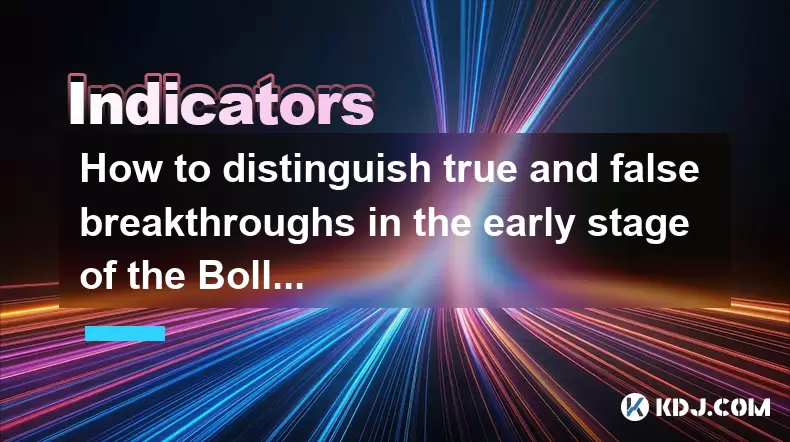
Understanding the Bollinger Band Structure
Bollinger Bands consist of three lines: a simple moving average (SMA) in the middle, and two outer bands that are standard deviations away from the SMA. These bands expand and contract based on market volatility. When the bands begin to widen, it often signals an increase in price volatility, which traders interpret as a potential breakout signal.
In the early stages of a Bollinger Band opening, it's crucial to understand what constitutes normal behavior versus significant movement. The widening of the bands usually follows a sharp price move, either up or down. However, not all such movements lead to sustained trends. This is where distinguishing between true and false breakouts becomes essential.
The key is to observe how price interacts with the upper and lower bands during this phase.
Identifying False Breakouts Using Price Action
False breakouts often occur when the price briefly pierces through one of the bands but fails to sustain momentum beyond that point. These can mislead traders into entering positions prematurely.
One effective method to filter out false breakouts is to examine candlestick patterns immediately following the breakout. If the breakout candle is followed by a candle that shows indecision—like a doji, spinning top, or bearish engulfing pattern—it may indicate weakness in the breakout direction.
- Look for rejection wicks at the end of a breakout candle.
- Check volume levels during and after the breakout; low volume suggests weak conviction.
- Watch for immediate reversal patterns that form after the breakout candle closes.
These clues help traders determine whether the breakout has enough strength to continue or if it’s likely to reverse soon.
Analyzing Volume During Bollinger Band Expansion
Volume plays a critical role in confirming whether a Bollinger Band breakout is genuine. In many cases, a real breakout will be accompanied by a noticeable spike in trading volume, indicating strong participation from market participants.
Conversely, a breakout that occurs on low or decreasing volume may suggest that few traders are buying or selling aggressively, making the move less reliable.
- Compare current volume to the average volume over the past 10–20 periods.
- Use volume indicators like On-Balance Volume (OBV) or Volume Weighted Average Price (VWAP) to confirm strength.
- Observe divergence between price and volume; rising prices with falling volume is a red flag.
By incorporating volume analysis into your strategy, you gain a clearer picture of whether the breakout has the backing of institutional or large retail players.
Using Additional Indicators for Confirmation
No single indicator should be used in isolation, especially when dealing with volatile instruments like cryptocurrencies. Combining Bollinger Bands with other tools such as Relative Strength Index (RSI), Moving Average Convergence Divergence (MACD), or Ichimoku Cloud can improve accuracy.
For instance, if the price breaks out of the upper band but RSI is already in overbought territory (>70), it could signal an exhaustion move rather than the start of a new trend.
- Overlay RSI to check for overbought or oversold conditions.
- Apply MACD to identify changes in momentum and trend strength.
- Utilize support/resistance levels from previous price action to gauge potential reversal zones.
These additional layers of confirmation reduce the likelihood of being caught in a false breakout trap.
Timeframe Considerations and Multi-Timeframe Analysis
A breakout that appears significant on a short-term chart (e.g., 15-minute or 1-hour) might not hold up when viewed on a higher timeframe (e.g., 4-hour or daily). Traders who only focus on lower timeframes risk reacting to noise rather than meaningful moves.
Multi-timeframe analysis allows you to see whether the breakout aligns with broader trends. For example, a breakout on the 1-hour chart might coincide with a key resistance level on the 4-hour chart, increasing the probability of a reversal.
- Start with a higher timeframe to establish context before analyzing lower ones.
- Align entry points across multiple timeframes for better timing.
- Avoid chasing breakouts without checking higher timeframe structure.
This approach helps filter out misleading signals and increases confidence in trade setups.
Frequently Asked Questions
Q: Can Bollinger Bands alone reliably predict breakouts?
A: No single indicator is foolproof. While Bollinger Bands can highlight volatility and potential breakout zones, they should always be used in conjunction with other tools such as volume, momentum oscillators, and price action analysis.
Q: Should I always wait for a retest after a Bollinger Band breakout?
A: Retesting provides a second opportunity to enter a trade with better risk-to-reward ratios. It's generally safer to wait for a retest, especially if the initial breakout lacks volume or shows signs of rejection.
Q: How do I set stop-loss levels during a Bollinger Band breakout?
A: A common method is to place the stop just beyond the opposite band. For example, if the price breaks above the upper band, set the stop below the lower band. Adjust according to volatility and recent price swings.
Q: What timeframe works best for spotting early Bollinger Band openings?
A: Shorter timeframes like 15-minute or 1-hour charts are more responsive to sudden volatility, making them ideal for detecting early openings. However, always verify against a higher timeframe to avoid false signals.
Disclaimer:info@kdj.com
The information provided is not trading advice. kdj.com does not assume any responsibility for any investments made based on the information provided in this article. Cryptocurrencies are highly volatile and it is highly recommended that you invest with caution after thorough research!
If you believe that the content used on this website infringes your copyright, please contact us immediately (info@kdj.com) and we will delete it promptly.
- SHIB Price, Meme Coin Mania, and the 250x Potential Hunt
- 2025-08-09 16:30:13
- SOL, ETFs, and AI: Crypto's Triple Threat Sensation!
- 2025-08-09 17:10:12
- Tokenized Stock on Solana: SOL Price Reacts to Exodus's Bold Move
- 2025-08-09 17:10:12
- Cardano, Mutuum Finance, Millionaires 2025: A New Wave of Crypto Fortunes?
- 2025-08-09 17:50:12
- Meme Coins on Blockchains in 2025: Hype or the Future?
- 2025-08-09 16:50:11
- World Liberty Financial, Public Listing, and WLFI Tokens: A New York Minute on the Trump-Backed Crypto Venture
- 2025-08-09 16:50:11
Related knowledge

What does it mean when the Triple Moving Average (TRIX) turns downward but the price doesn't fall?
Aug 09,2025 at 12:42pm
Understanding the Triple Moving Average (TRIX) IndicatorThe Triple Moving Average, commonly known as TRIX, is a momentum oscillator designed to filter...

What does it mean when the Williams' oscillator repeatedly hits bottoms but fails to rebound?
Aug 09,2025 at 09:28am
Understanding the Williams %R OscillatorThe Williams %R oscillator, developed by Larry Williams, is a momentum indicator used in technical analysis to...
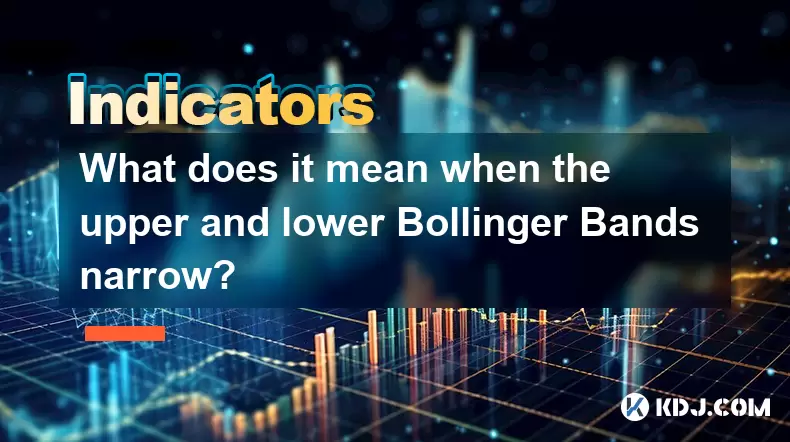
What does it mean when the upper and lower Bollinger Bands narrow?
Aug 09,2025 at 03:00pm
Understanding Bollinger Bands in Cryptocurrency TradingBollinger Bands are a widely used technical analysis tool in the cryptocurrency market, develop...
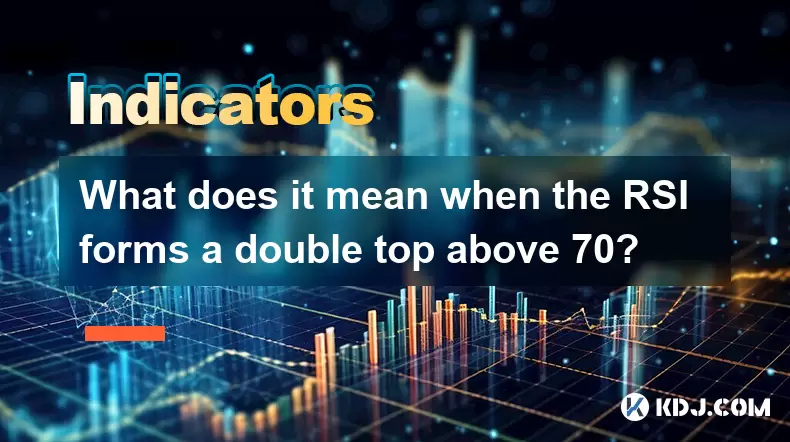
What does it mean when the RSI forms a double top above 70?
Aug 09,2025 at 05:50pm
Understanding the RSI and Overbought ConditionsThe Relative Strength Index (RSI) is a momentum oscillator that measures the speed and change of price ...
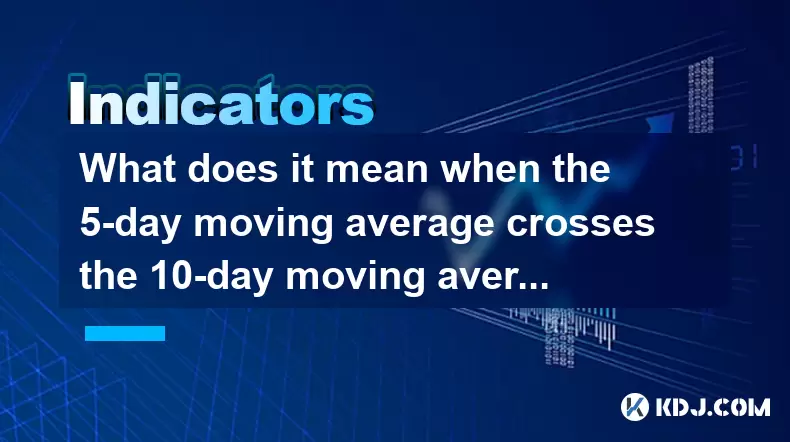
What does it mean when the 5-day moving average crosses the 10-day moving average but the 20-day moving average remains upward?
Aug 09,2025 at 03:35pm
Understanding Moving Averages in Cryptocurrency TradingMoving averages are foundational tools in technical analysis, especially within the cryptocurre...
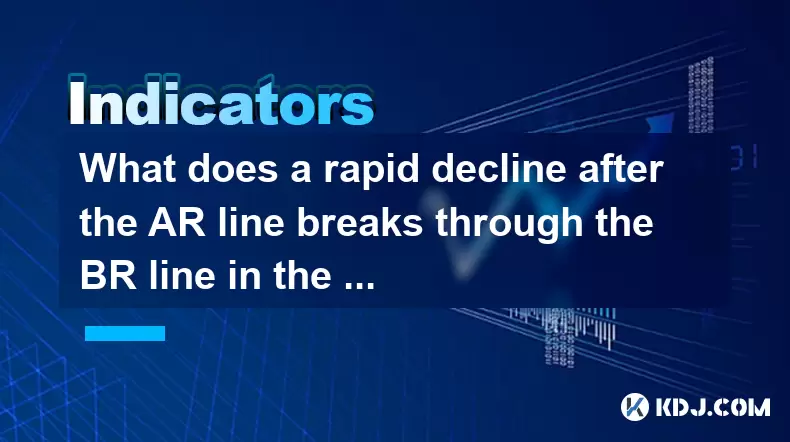
What does a rapid decline after the AR line breaks through the BR line in the ARBR indicator indicate?
Aug 09,2025 at 04:42pm
Understanding the ARBR Indicator ComponentsThe ARBR indicator is a technical analysis tool that combines two oscillators: the AR (Amplitude Ratio) and...

What does it mean when the Triple Moving Average (TRIX) turns downward but the price doesn't fall?
Aug 09,2025 at 12:42pm
Understanding the Triple Moving Average (TRIX) IndicatorThe Triple Moving Average, commonly known as TRIX, is a momentum oscillator designed to filter...

What does it mean when the Williams' oscillator repeatedly hits bottoms but fails to rebound?
Aug 09,2025 at 09:28am
Understanding the Williams %R OscillatorThe Williams %R oscillator, developed by Larry Williams, is a momentum indicator used in technical analysis to...

What does it mean when the upper and lower Bollinger Bands narrow?
Aug 09,2025 at 03:00pm
Understanding Bollinger Bands in Cryptocurrency TradingBollinger Bands are a widely used technical analysis tool in the cryptocurrency market, develop...

What does it mean when the RSI forms a double top above 70?
Aug 09,2025 at 05:50pm
Understanding the RSI and Overbought ConditionsThe Relative Strength Index (RSI) is a momentum oscillator that measures the speed and change of price ...

What does it mean when the 5-day moving average crosses the 10-day moving average but the 20-day moving average remains upward?
Aug 09,2025 at 03:35pm
Understanding Moving Averages in Cryptocurrency TradingMoving averages are foundational tools in technical analysis, especially within the cryptocurre...

What does a rapid decline after the AR line breaks through the BR line in the ARBR indicator indicate?
Aug 09,2025 at 04:42pm
Understanding the ARBR Indicator ComponentsThe ARBR indicator is a technical analysis tool that combines two oscillators: the AR (Amplitude Ratio) and...
See all articles

























































































